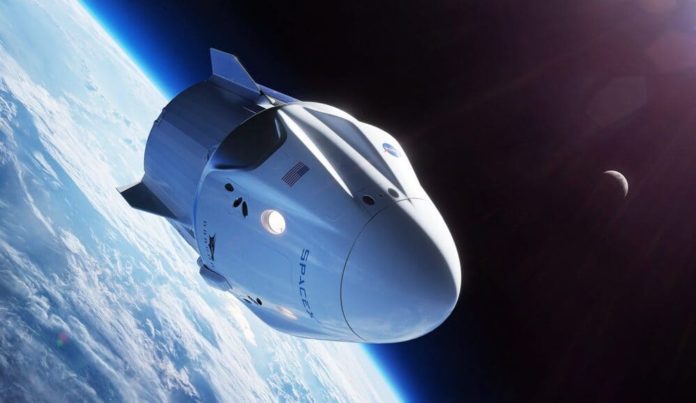SpaceX, the brainchild of Elon Musk, has become a household name in the realm of space exploration. With ambitious goals and groundbreaking achievements, SpaceX is revolutionizing space travel, making it more accessible, affordable, and exciting than ever before. But how did this innovative company achieve so much, and what lies ahead in its quest to explore the cosmos?
Early days of SpaceX
Founded in 2002, SpaceX faced significant challenges in its early years. With a vision to reduce space transportation costs and enable the colonization of Mars, Elon Musk and his team embarked on a journey fraught with technical hurdles and financial pressures. The company’s first successful launch in 2008, with the Falcon 1, marked a turning point, demonstrating SpaceX’s potential to change the industry.
Reusability of rockets
One of SpaceX’s most revolutionary concepts is the reusability of rockets. Traditional rockets were designed for single use, making space travel prohibitively expensive. SpaceX’s Falcon 9 changed this paradigm by being the first orbital rocket capable of reflight. This innovation drastically reduces costs, allowing for more frequent and affordable launches.
Innovation in rocket design
SpaceX’s advancements in rocket design are nothing short of extraordinary. The development of the Falcon Heavy, which can carry a larger payload than any other operational rocket, showcases the company’s commitment to pushing technological boundaries. The Falcon Heavy’s successful launches demonstrate the feasibility of powerful, yet cost-effective, rocket technology.
Cost reduction in space travel
By focusing on reusability and efficiency, SpaceX has significantly reduced the cost of space travel. The ability to reuse rockets like the Falcon 9 and Falcon Heavy means that launching payloads into space is no longer a one-off expense. This cost reduction opens the door for more entities, from government agencies to private companies, to participate in space missions.
Commercial space flights
SpaceX has ushered in the era of commercial space travel. Through partnerships with NASA and private companies, SpaceX has demonstrated the viability of commercial missions. The Crew Dragon spacecraft, designed to transport astronauts to the International Space Station (ISS), represents a milestone in human spaceflight and commercial partnerships.
Starship and Mars colonization
Elon Musk’s vision for Mars colonization is epitomized by the development of Starship. This next-generation spacecraft aims to carry humans and cargo to Mars, making interplanetary travel a reality. Despite the immense technical challenges, progress is being made, and each test flight brings SpaceX closer to its goal of a sustainable Mars colony.
Satellite deployment and Starlink
SpaceX is also revolutionizing satellite deployment. With the ability to launch multiple satellites simultaneously, SpaceX has become a leader in this field. The Starlink project, aimed at providing global internet coverage, involves deploying thousands of small satellites in low Earth orbit. This ambitious initiative could bridge the digital divide, offering internet access to remote and underserved areas.
Human spaceflight
The Dragon spacecraft has been pivotal in SpaceX’s human spaceflight achievements. The successful launch of Crew Dragon with astronauts aboard marked the return of crewed space missions from U.S. soil after nearly a decade. These missions underscore SpaceX’s capability to safely transport humans to and from space.
SpaceX’s Influence on global space policies
SpaceX’s innovative approach is reshaping global space policies. By proving that private companies can achieve what was once the domain of government space agencies, SpaceX is driving regulatory changes and fostering international collaborations. The competitive landscape of space exploration is evolving, with countries and companies vying to keep up with SpaceX’s pace.
Public engagement and support
Public interest in space travel has soared, thanks in part to SpaceX’s engaging approach. High-profile missions, live-streamed launches, and transparent communication strategies have captivated the public’s imagination. SpaceX’s ability to make space travel relatable and exciting plays a crucial role in garnering support for its ambitious projects.
Environmental considerations
While SpaceX focuses on innovation, it also considers environmental sustainability. The company is working on minimizing the environmental impact of its launches through reusability and other eco-friendly practices. However, the environmental footprint of rocket launches remains a concern that SpaceX continues to address.
Technological spin-offs
The technological advancements achieved by SpaceX have far-reaching implications beyond space travel. Innovations in materials, propulsion systems, and automation have potential applications in other industries. These spin-offs demonstrate how space exploration can drive technological progress and benefit society as a whole.
Challenges and criticisms
SpaceX’s journey has not been without challenges and criticisms. Technical setbacks, such as failed launches and landings, highlight the inherent risks of space exploration. Additionally, concerns about the monopolization of space resources and the environmental impact of satellite constellations are issues that SpaceX must navigate.
Future prospects
Looking ahead, SpaceX has an array of exciting projects and missions on the horizon. From the continued development of Starship to plans for lunar missions, SpaceX is poised to lead the next era of space exploration. The long-term vision includes making space travel as routine as air travel, with destinations extending beyond our solar system.
SpaceX is not just changing how we travel to space; it’s transforming our aspirations for the future. By making space travel more accessible and affordable, SpaceX is opening up new possibilities for exploration and innovation. As we look to the stars, the company’s relentless pursuit of technological excellence continues to inspire and drive the global space community forward.













